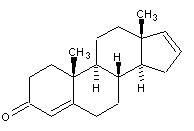Dangerous Chemicals In Cosmetics
Cosmetics
(also known as makeup or make-up) are care substances used to
enhance the appearance and odor of human body.In the United States, cosmetics defines as " intended to be applied to the human body for
cleansing, beautifying, promoting attractiveness, or altering the appearance
without affecting the body's structure or functions."
Cosmetics are widely used
among women. However do you know that there are certain chemical that are dangerous?
1. Butyl acetate
Butyl acetate is found in nail strengtheners and nail
polishes.
Health Hazards: Butyl acetate vapors may cause dizziness or drowsiness.
Continued use of a product containing butyl acetate may cause skin to crack and
become dry.
2. Butylated
hydroxytoluene
Butylated hydroxytoluene is found in a variety of cosmetics
and personal care products. It is an antioxidant which helps slow the rate at
which a product changes color over time.
Health Hazards: Butylated hydroxytoluene may cause skin and eye irritation.
3. Coal
tar
Coal tar is used to control itching and scaling, to soften
skin, and as a colorant.
Health Hazards: Coal tar is carcinogenic.
4. Diethanolamine
(DEA)
Diethanolamine is a
contaminant associated with cocamide DEA and lauramide DEA, which are used as
emulsifiers and foaming agents in products such as shampoos, shaving creams,
moisturizers, and baby washes.
Health Hazards: It can be absorbed into the body through the skin.It act
as a carcinogen and converted to nitrosamine,which is also
carcinogenic.
5. 1,4-dioxane
This is a contaminant that may be associated with sodium
laureth sulfate, PEG, and most ethoxylated ingredients with names ending in
-eth. These ingredients are found in many products, most notably shampoos and
body washes.Formaldehyde (IUPAC
name methanal) is a chemical compound that is the simplest aldehyde.
Health Hazards: It will cause cancer in animal.
6. Formaldehyde
Formaldehyde is used
as preservative in a variety of products, such as nail
polish, soap, shaving cream, eyelash adhesive and shampoo.
Health Hazards: The European Union has banned the use of formaldehyde in cosmetics and
personal care products. It is associated with health concerns, such as
respiratory tract eye irritation,cancer and immune system damage.
7. Fragrance
Fragrance may be used to
indicate any of a number of chemicals in a personal care product.
Health Hazards: Many fragrances are toxic. Some of these fragrances can act as obesogens (cause obesity) and may disrupt normal endocrine function, including reproductive health. Phthalates
may cause developmental defects and delays.
8. Lead
Lead typically occurs as a contaminant, such as in hydrated
silica, an ingredient in toothpaste. Lead acetate is added as an ingredient in
some lipsticks and men's hair dye.
Health Hazards: Lead is a neurotoxin. It can cause brain damage even at a low concentrations.
9. Mercury
Mercury is a heavy
silvery metal that is liquid at room temperature.The use of mercury compounds in eye makeup
is at concentrations up to 65 parts per million.
Health Hazards: Mercury is associated with a host of health concerns including
allergic reactions, skin irritation, toxicity, neurological damage, and environmental damage. Mercury readily passes into the body
through the skin.
10. Talc
Talc is used to absorb moisture and provide a hint of
sparkle. It is found in eye shadow, blush, baby powder, deodorant and soap.
Health Hazards: Talc is known to act as a human carcinogen and will cause ovarian cancer and may lead to
the formation of lung tumors.
.
11. Toluene
Toluene is found in nail polish and hair dye as a solvent.The purpose is to improve adhesion and to add gloss.
Health Hazard: Toluene is toxic and carcinogenic.It will cause damage in reproductive system and
developmental.In addition, it will decrease fertility.

















